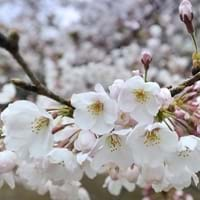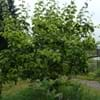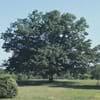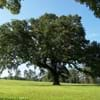Life Span
Perennial
Annual
Origin
Hybrid origin
South America, Micronesia, New Zealand
Types
not available
Not Available
Habitat
Not Available
coastal environs, Grassland, Roadsides, Waste areas, waterways
USDA Hardiness Zone
5-8
7-11
Sunset Zone
3a, 3b, 4, 5, 6, 7, 14, 15, 16, 17, 18, 19, 20
H1, 3a, 3b, 4, 5, 6, 7, 8, 9, 10, 11, 12, 13, 14, 15, 16, 17, 18, 19, 20, 21, 22, 23, 24
Habit
Arching/Fountain-shaped
Clump-Forming
Flower Color
White, Light Pink
Purple
Flower Color Modifier
Bicolor
Bicolor
Fruit Color
Black
Not Available
Leaf Color in Spring
Green, Dark Green
Green, Light Green, Dark Green
Leaf Color in Summer
Dark Green
Light Green
Leaf Color in Fall
Yellow, Orange, Yellow green
Green, Light Green, Dark Green
Leaf Color in Winter
Not Available
Dark Green, Tan
Leaf Shape
Ovate
Grass like
Plant Season
Spring, Summer, Fall
Spring, Summer, Fall, Winter
Sunlight
Full Sun
Full Sun
Type of Soil
Clay, Loam, Sand
Loam
The pH of Soil
Acidic, Neutral, Alkaline
Acidic, Neutral
Soil Drainage
Well drained
Well drained
Bloom Time
Early Spring
Summer, Fall
Tolerances
Not Available
Drought, Salt
Where to Plant?
Ground
Ground
How to Plant?
Seedlings, Stem Planting
Seedlings
Plant Maintenance
Medium
Medium
Watering Requirements
Do Not over Water
Average Water Needs
In Summer
Lots of watering
Lots of watering
In Spring
Moderate
Moderate
In Winter
Average Water
Average Water
Soil pH
Acidic, Neutral, Alkaline
Acidic, Neutral
Soil Type
Clay, Loam, Sand
Loam
Soil Drainage Capacity
Well drained
Well drained
Sun Exposure
Full Sun
Full Sun
Pruning
Remove damaged leaves
Remove damaged leaves, Remove dead branches, Remove dead leaves
Fertilizers
All-Purpose Liquid Fertilizer
All-Purpose Liquid Fertilizer
Pests and Diseases
Bacterial Diseases, Chewing and Boring Insects, Fungal Diseases, Sap-Sucking Insects
Red blotch
Plant Tolerance
Not Available
Drought
Flower Petal Number
Single
Single
Foliage Texture
Medium
Fine
Foliage Sheen
Matte
Matte
Attracts
Birds
Not Available
Allergy
Not Available
Itchiness
Aesthetic Uses
Showy Purposes
Showy Purposes
Beauty Benefits
Not Available
Not Available
Environmental Uses
Shadow Tree, Soil protection
Air purification
Medicinal Uses
No Medicinal Use
Not Available
Part of Plant Used
Whole plant
Flowers, Leaves
Other Uses
Grown for shade, Used as Ornamental plant
Animal Feed, Used as Ornamental plant
Used As Indoor Plant
No
No
Used As Outdoor Plant
Yes
Yes
Garden Design
Feature Plant, Shade Trees, Street Trees, Topiary / Bonsai / Espalier
Cutflower, Dried Flower/Everlasting, Feature Plant, Foundation, Groundcover, Mixed Border, Screening / Wind Break
Botanical Name
PRUNUS x yedoensis
CORTADERIA jubata
Common Name
Yoshino Cherry
Purple Pampas Grass
In Hindi
योशिनो चेरी
Purple pampas grass
In German
Yoshino-Kirsche
Lila Pampasgras
In French
cerise Yoshino
Pourpre herbe de pampa
In Spanish
Yoshino cerezo
hierba púrpura pampas
In Greek
Yoshino κεράσι
Μωβ γρασίδι παμπάς
In Portuguese
Yoshino cereja
grama roxa pampas
In Polish
Yoshino wiśniowe
Purpurowy trawa pampasów
In Latin
Yoshino Cherry
Purpura Pampas herba
Phylum
Not Available
Magnoliophyta
Class
Not Available
Liliopsida
Clade
Angiosperms, Eudicots, Rosids
Angiosperms, Commelinids, Monocots
Tribe
Not Available
Not Available
Subfamily
Not Available
Not Available
Number of Species
Not Available
Not Available
Importance of Yoshino Cherry and Purple Pampas Grass
Want to have the most appropriate plant for your garden? You might want to know the importance of Yoshino Cherry and Purple Pampas Grass. Basically, these two plants vary in many aspects. Compare Yoshino Cherry and Purple Pampas Grass as they differ in many characteristics such as their life, care, benefits, facts, etc. Every gardener must at least have the slightest clue about the plants he wants to plant in his garden. Compare their benefits, which differ in many ways like facts and uses. The medicinal use of Yoshino Cherry is No Medicinal Use whereas of Purple Pampas Grass is Not Available. Yoshino Cherry has beauty benefits as follows: Not Available while Purple Pampas Grass has beauty benefits as follows: Not Available.
Compare Facts of Yoshino Cherry vs Purple Pampas Grass
How to choose the best garden plant for your garden depending upon its facts? Here garden plant comparison will help you to solve this query. Compare the facts of Yoshino Cherry vs Purple Pampas Grass and know which one to choose. As garden plants have benefits and other uses, allergy is also a major drawback of plants for some people. Allergic reactions of Yoshino Cherry are Not Available whereas of Purple Pampas Grass have Itchiness respectively. Having a fruit bearing plant in your garden can be a plus point of your garden. Yoshino Cherry has no showy fruits and Purple Pampas Grass has showy fruits. Also Yoshino Cherry is not flowering and Purple Pampas Grass is not flowering . You can compare Yoshino Cherry and Purple Pampas Grass facts and facts of other plants too.





